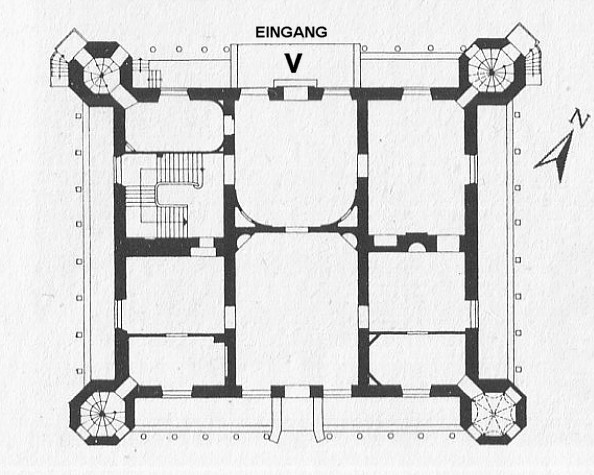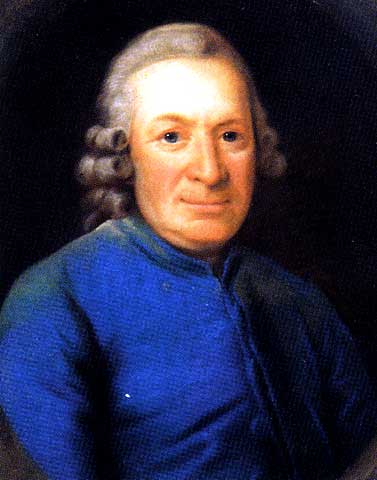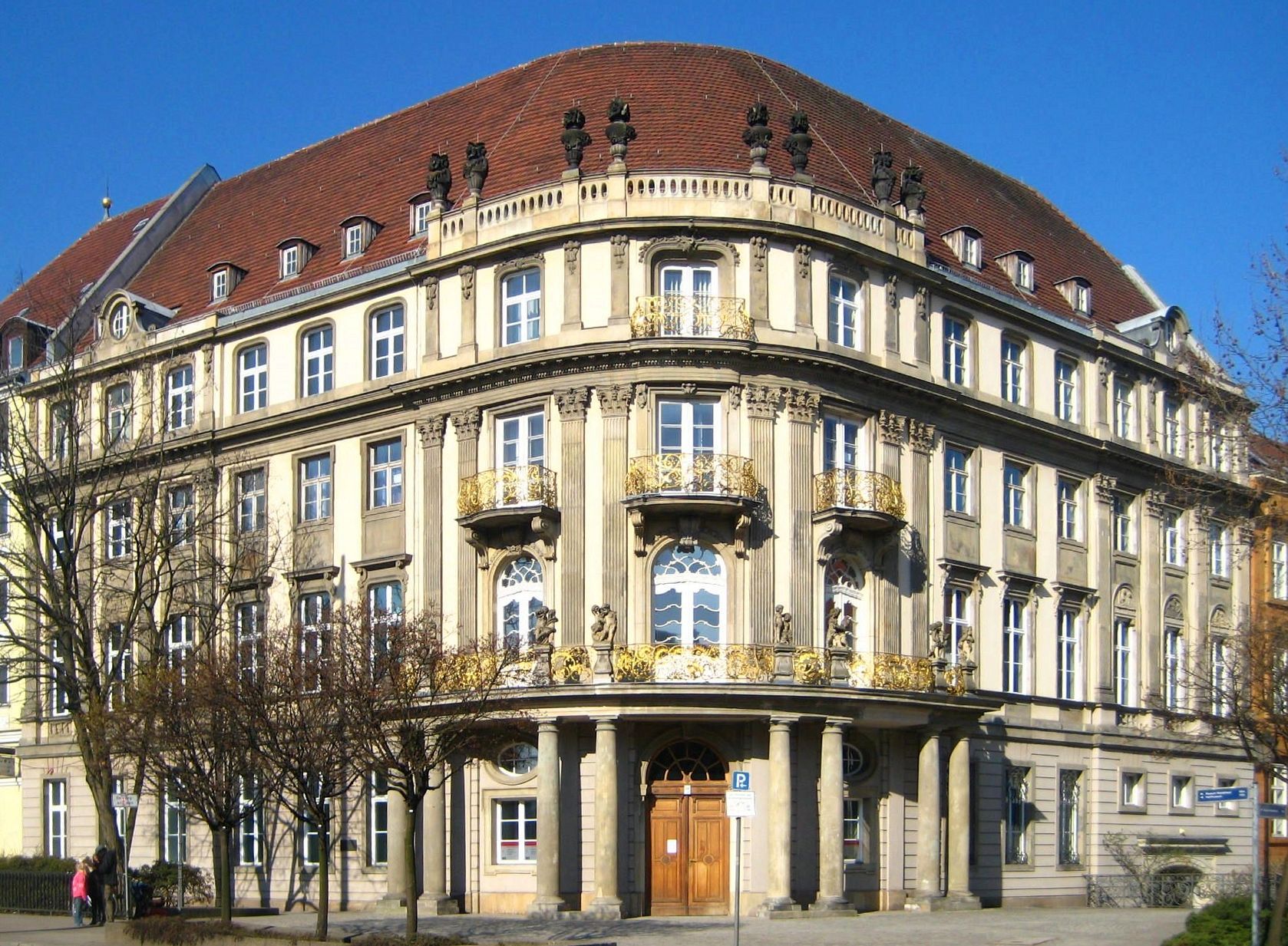|
Heinrich Carl Von Schimmelmann
Heinrich Carl von Schimmelmann (13 July 1724 – 16 February 1782) was a German-born merchant, banker, nobleman, planter and politician. During the Seven Years' War, he speculated heavily on currency debasement in close association with his business partner Abel Seyler. After supporting Denmark–Norway as the head of the banking system in Denmark, he was rewarded by becoming a member of the Danish nobility. Eventually, he became a plantation owner (and slave owner) and Danish finance minister. From 1774 onwards, von Schimmelmann was involved in the project of digging the Eider Canal. He died in 1782. Early life and career His father Diedrich Jacob was a merchant and city councillor in Demmin, Swedish Pommerania, who sent him out learning the trade in Stettin. In 1746 he set up a supplies store in sugar, coffee and tobacco in Dresden. On 4 March 1747, at the age of 23, he married then 17-year-old Caroline Tugendreich Friedeborn. In 1755, Schimmelmann was responsible for tari ... [...More Info...] [...Related Items...] OR: [Wikipedia] [Google] [Baidu] |
Demmin
Demmin () is a town in the Mecklenburgische Seenplatte district, Mecklenburg-Western Pomerania, Germany. It was the capital of the former district of Demmin. Geography Demmin lies on the West Pomeranian plain at the confluence of the rivers Peene, Tollense and Trebel. Lake Kummerow and the Bay of Stettin (Oderhaff) may be reached by boat on the Peene, Neubrandenburg via Altentreptow on by-roads and cycleways. The area of the confluences of the Tollense and Trebel with the Peene are called the Three Streams Land (''Dreistromland'') for tourist purposes and borrowing from the ancient land of Zweistromland. North of Demmin is the Drosedow Forest and woods of Woldeforst (c. 174 ha.). Here is also the Kronwald Nature Reserv (103 ha.). To the west on the left bank of the Peene is the woodland area of Devener Holz and, on the left bank, Vorwerk Switzerland (''Vorwerker Schweiz''). To the east of the town are the Sandberg Pines and, to the southeast, the Vorwerk Forest. Neighbou ... [...More Info...] [...Related Items...] OR: [Wikipedia] [Google] [Baidu] |
Stettin
Szczecin (, , german: Stettin ; sv, Stettin ; Latin language, Latin: ''Sedinum'' or ''Stetinum'') is the capital city, capital and largest city of the West Pomeranian Voivodeship in northwestern Poland. Located near the Baltic Sea and the Poland-Germany border, German border, it is a major port, seaport and Poland's seventh-largest city. As of December 2021, the population was 395,513. Szczecin is located on the river Oder, south of the Szczecin Lagoon and the Bay of Pomerania. The city is situated along the southwestern shore of Dąbie Lake, on both sides of the Oder and on several large islands between the western and eastern branches of the river. Szczecin is adjacent to the Police, West Pomeranian Voivodeship, town of Police and is the urban centre of the Szczecin agglomeration, an extended metropolitan area that includes communities in the States of Germany, German states of Brandenburg and Mecklenburg-Western Pomerania. Szczecin is the administrative and industrial cen ... [...More Info...] [...Related Items...] OR: [Wikipedia] [Google] [Baidu] |
Schloss Ahrensburg
Schloss Ahrensburg (Ahrensburg Palace) is a former ''Herrenhaus'' (mansion) and is today referred to as a ''Schloss''. It is located in Ahrensburg in southern Schleswig-Holstein, Germany, not far from the city of Hamburg. History Previous structures In the 13th century, there was a mansion with a moat and defensive towers known as ''Burg Arnesvelde'', about three kilometers south of today's ''Schloss Ahrensburg''. In 1327, the fortified mansion was owned by the church. During Protestant Reformation, the Reformation the property came into the hands of the Danish King Frederick II of Denmark, Frederick II, and in March 1567 Arnesvelde was transferred to Daniel Rantzau as compensation for work done and debts the king had run up. After Rantzau's death in 1569 during the Siege of Varberg his brother took over the mansion. He tore down parts of the castle and started building what was to become today's ''Schloss Ahrensburg''. Current structure The original structure on the isl ... [...More Info...] [...Related Items...] OR: [Wikipedia] [Google] [Baidu] |
Frederick II, Duke Of Mecklenburg-Schwerin
, house =House of Mecklenburg , father =Christian Ludwig II, Duke of Mecklenburg-Schwerin , mother =Duchess Gustave Caroline of Mecklenburg-Strelitz , birth_date = , birth_place =Schwerin, Mecklenburg-Schwerin , death_date = , death_place =Ludwigslust, Mecklenburg-Schwerin Frederick II, Duke of Mecklenburg-Schwerin, called ''the Pious'' (german: Friedrich II Herzog von Mecklenburg-Schwerin; 9 November 171721 April 1785) was Duke of Mecklenburg-Schwerin from 1756 until his death. Early life Frederick was born at Schwerin, the son of Christian Ludwig II, Duke of Mecklenburg, and his wife, Duchess Gustave Caroline of Mecklenburg-Strelitz. In his childhood and youth his great-aunt Duchess Augusta of Mecklenburg-Güstrow had great influence on the intellectual and spiritual development of Frederick, essentially in instilling the beliefs of Pietism. Duke of Mecklenburg-Schwerin After the death of his father in 1756, Frederick assumed the government of the D ... [...More Info...] [...Related Items...] OR: [Wikipedia] [Google] [Baidu] |
Schwerin
Schwerin (; Mecklenburgisch dialect, Mecklenburgian Low German: ''Swerin''; Latin: ''Suerina'', ''Suerinum'') is the Capital city, capital and List of cities and towns in Germany, second-largest city of the northeastern States of Germany, German state of Mecklenburg-Vorpommern as well as of the region of Mecklenburg, after Rostock. It has around 96,000 inhabitants, and is thus the least populous of all German state capitals. Schwerin is located on the southwestern shore of Lake Schwerin (''Schweriner See''), the second-largest lake of the Mecklenburg Lake Plateau after the Müritz, and there are eleven other lakes within Schwerin's city limits. The city is surrounded by the district of Nordwestmecklenburg, Northwestern Mecklenburg to the north, and the district of Ludwigslust-Parchim to the south. Schwerin and the two surrounding districts form the eastern outskirts of the Hamburg Metropolitan Region. The name of the city is of Polabian Slavs, Slavic origin, deriving from the root ... [...More Info...] [...Related Items...] OR: [Wikipedia] [Google] [Baidu] |
Daniel Itzig
Daniel Itzig (also known as Daniel Yoffe 18 March 1723 in Berlin – 17 May 1799 in Potsdam) was a Court Jew of Kings Frederick II of Prussia, Frederick II the Great and Frederick William II of Prussia, Frederick William II of Kingdom of Prussia, Prussia. Biography Itzig was born in Berlin. His Itzig family, family was mercantile. Itzig was a banker and a mintmaster in partnership with Veitel Heine Ephraim. Together they leased all the Mint (coin), mints in Saxony and Prussia. During the Seven Years' War they assisted Frederick the Great in debasing the Saxonian currency and spreading the Ephraimiten, not only in Saxony, but also in Silesia, Poland, Bohemia and Courland. Itzig was one of the very few Jews in Prussia to receive full citizenship privileges, as a "Useful Jew". He became extraordinarily wealthy as a consequence. Together with his son in law David Friedlander, Itzig was appointed to lead a committee which was to discuss ways to improve the Jewish civil and social ... [...More Info...] [...Related Items...] OR: [Wikipedia] [Google] [Baidu] |
Veitel Heine Ephraim
Veitel Heine Ephraim, 1703 – 16 May 1775 in Berlin) was jeweller to the Prussian Court, a silk entrepreneur in Potsdam, the chairman of the Jewish congregation in Berlin/Prussia, and since 1756 Mintmaster in Saxony and from 1758 also in Prussia. During the Seven Years' War Frederick the Great devalued the Prussian coin five times in order to finance the war; debased coins were produced with the help from Ephraim and Daniel Itzig, and spread outside Prussia: in Saxony, Poland, and Kurland. Ephraim and his companion Itzig became infamous for adding copper, up to 70%, so as to debase the coins, which becaime known as Ephraimiten. Heinrich Carl von Schimmelmann, Johann Ernst Gotzkowsky and Leendert Pieter de Neufville also cooperated in the debasement policy.The king's coinage policy became a key element of war financing. Life Veitel Ephraim was the fifth child of Altona-born jeweller, and elder of the Jewish Community Nathan Veitel Ephraim (1658-1748), who moved from Hamburg t ... [...More Info...] [...Related Items...] OR: [Wikipedia] [Google] [Baidu] |
Frederick II Of Prussia
Frederick II (german: Friedrich II.; 24 January 171217 August 1786) was King in Prussia from 1740 until 1772, and King of Prussia from 1772 until his death in 1786. His most significant accomplishments include his military successes in the Silesian wars, his re-organisation of the Prussian Army, the First Partition of Poland, and his patronage of the arts and the Enlightenment. Frederick was the last Hohenzollern monarch titled King in Prussia, declaring himself King of Prussia after annexing Polish Prussia from the Polish–Lithuanian Commonwealth in 1772. Prussia greatly increased its territories and became a major military power in Europe under his rule. He became known as Frederick the Great (german: links=no, Friedrich der Große) and was nicknamed "Old Fritz" (german: links=no, "Der Alte Fritz"). In his youth, Frederick was more interested in music and philosophy than in the art of war, which led to clashes with his authoritarian father, Frederick William I of Prussi ... [...More Info...] [...Related Items...] OR: [Wikipedia] [Google] [Baidu] |
Martin Geck
Martin Geck (19 March 1936 – 22 November 2019) was a German musicologist. He taught at the Technical University of Dortmund. His publications concerned a number of major composers. Among the composers in whom he specialised was Johann Sebastian Bach. Publications * ''Ludwig van Beethoven''. Rowohlt Verlag Rowohlt Verlag is a German publishing house based in Hamburg, with offices in Reinbek and Berlin. It has been part of the Georg von Holtzbrinck Group since 1982. The company was created in 1908 in Leipzig by Ernst Rowohlt. Divisions * Kinder * ..., Reinbek bei Hamburg 1996, . * ''ABC-Tierlieder zum Mitmachen''. (with Gabriele Kulick and Irmgard Merkt), CD and Cassette, Cornelsen, Berlin 1997, . * ''Musiktherapie als Problem der Gesellschaft''. Klett-Cotta, Stuttgart 1998, . * ''„Denn alles findet bei Bach statt“. Erforschtes und Erfahrenes.'' Metzler, Stuttgart/Weimar 2000, . * ''Von Beethoven bis Mahler. Leben und Werk der großen Komponisten des 19. Jahrhunderts.' ... [...More Info...] [...Related Items...] OR: [Wikipedia] [Google] [Baidu] |
Meissen Porcelain
Meissen porcelain or Meissen china was the first European hard-paste porcelain. Early experiments were done in 1708 by Ehrenfried Walther von Tschirnhaus. After his death that October, Johann Friedrich Böttger continued von Tschirnhaus's work and brought this type of porcelain to the market, financed by King Augustus II of Poland, Augustus the Strong, King of Poland and Elector of Saxony. The production of porcelain in the royal factory at Meissen, near Dresden, started in 1710 and attracted artists and artisans to establish, arguably, the most famous porcelain manufacturer known throughout the world. Its signature logo, the crossed swords, was introduced in 1720 to protect its production; the mark of the swords is reportedly one of the oldest trademarks in existence. ''Dresden porcelain'' (or "china") was once the usual term for these wares, until in 1975 the (Higher Munich State Court) decided in favour of the Saxon Porcelain Manufactory Dresden, which alone was then allowed ... [...More Info...] [...Related Items...] OR: [Wikipedia] [Google] [Baidu] |
Geheimrat
''Geheimrat'' was the title of the highest advising officials at the Imperial, royal or princely courts of the Holy Roman Empire, who jointly formed the ''Geheimer Rat'' reporting to the ruler. The term remained in use during subsequent monarchic reigns in German-speaking areas of Europe until the end of the First World War. At its origin the literal meaning of the word in German was 'trusted advisor' - the word "geheim" (secret) implying that such an advisor could be trusted with the Monarch's secrets (similar to "secretary" in English being linguistically related to "secret"). The English-language equivalent is Privy Councillor. The office contributing to the state's politics and legislation had its roots in the age of absolutism from the 17th century onward, when a governmental administration by a dependent bureaucracy was established similar to the French '' Conseil du Roi''. A precursor was the '' Reichshofrat'', a judicial body established by Emperor Maximilian I of Habsbu ... [...More Info...] [...Related Items...] OR: [Wikipedia] [Google] [Baidu] |
Kursachsen
The Electorate of Saxony, also known as Electoral Saxony (German: or ), was a territory of the Holy Roman Empire from 1356–1806. It was centered around the cities of Dresden, Leipzig and Chemnitz. In the Golden Bull of 1356, Emperor Charles IV designated the Duchy of Saxe-Wittenberg an electorate, a territory whose ruler was one of the prince-electors who chose the Holy Roman emperor. After the extinction of the male Saxe-Wittenberg line of the House of Ascania in 1422, the duchy and the electorate passed to the House of Wettin. The electoral privilege was tied only to the Electoral Circle, specifically the territory of the former Duchy of Saxe-Wittenberg. In the 1485 Treaty of Leipzig, the Wettin noble house was divided between the sons of Elector Frederick II into the Ernestine and Albertine lines, with the electoral district going to the Ernestines. In 1547, when the Ernestine elector John Frederick I was defeated in the Schmalkaldic War, the electoral district and el ... [...More Info...] [...Related Items...] OR: [Wikipedia] [Google] [Baidu] |








